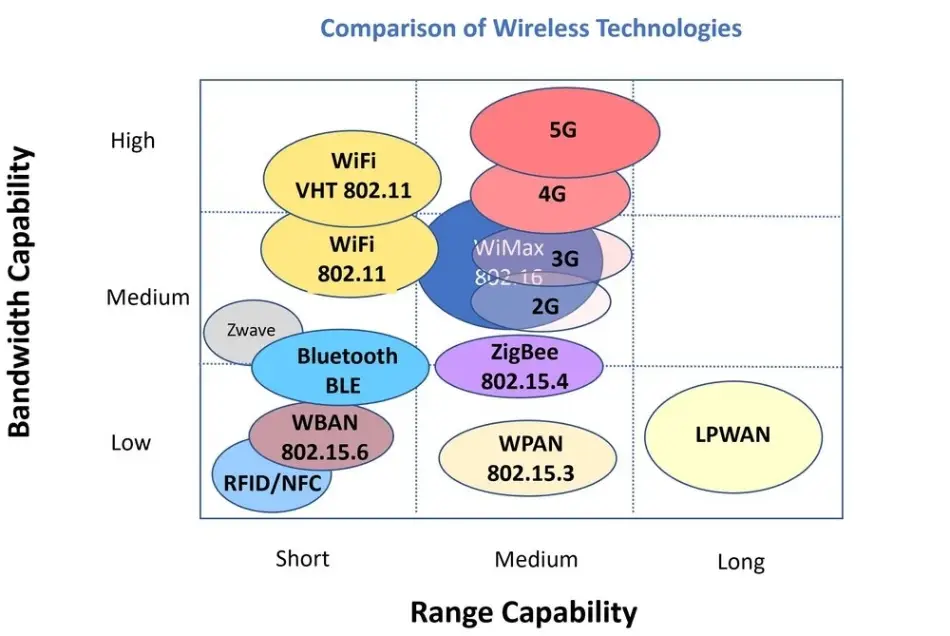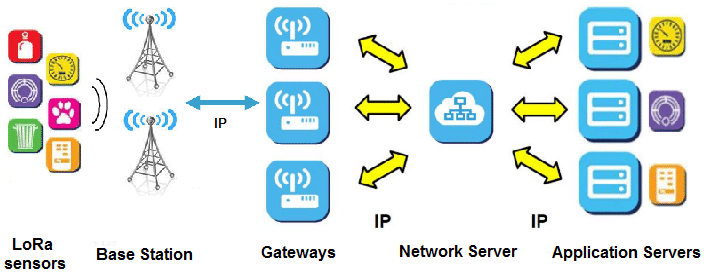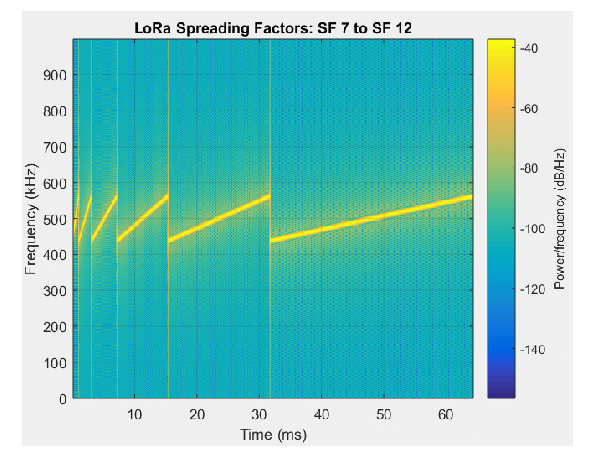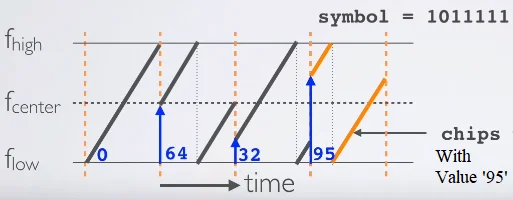New Page
Introduction to LoRa
Background
LoRa, or Long Range, emerged in response to the growing demand for efficient connectivity in the Internet of Things (IoT). As IoT applications expanded, the limitations of traditional networks like Wi-Fi and cellular became apparent; they couldn’t provide the necessary range, energy efficiency, or cost-effectiveness needed to support a vast number of devices, especially in remote or infrastructure-poor areas. LoRa was designed to fill this gap by offering a wireless solution that prioritizes long-range communication, low power usage, and affordability, making it an ideal choice for IoT networks.
LoRa’s primary advantage lies in its ability to offer long-range communication, low power consumption, and cost-effectiveness, meeting the essential requirements of IoT applications. By enabling connections over distances of up to 15-20 kilometers in rural areas with minimal infrastructure, LoRa supports a wide range of IoT deployments, from smart agriculture to industrial monitoring. Its low power profile allows devices to operate for years on a single battery, making it ideal for remote or hard-to-reach locations where maintenance is costly or impractical. Additionally, LoRa uses unlicensed ISM bands, allowing large numbers of devices to connect without interference or licensing fees, which keeps costs low and scalability high. These advantages make LoRa a uniquely valuable technology for IoT networks, particularly where traditional wireless solutions fall short.
LoRa’s innovation centers on a few key technologies designed specifically to solve IoT challenges. One such technology is Chirp Spread Spectrum (CSS) modulation, a technique that spreads data across multiple frequencies, ensuring reliable long-distance transmission while enhancing resistance to interference. This means that data can travel over extended ranges with high immunity to disruptions, an essential feature in rural or industrial IoT environments where signal clarity is critical. CSS modulation, initially used in military applications, now forms the backbone of LoRa’s capability to maintain robust connections over significant distances without requiring extensive infrastructure.
Another innovation is Adaptive Data Rate (ADR), which intelligently adjusts the data rate and transmission power based on each device’s distance from the gateway and the current network conditions. ADR allows LoRa devices closer to the gateway to operate at lower power and higher data rates, preserving battery life, while devices farther away use slightly more power to maintain a steady connection. This dynamic adjustment not only improves network efficiency but also prolongs device longevity, making it an ideal feature for battery-powered IoT deployments where energy conservation is paramount.
LoRa’s capabilities are further enhanced by the LoRaWAN protocol, which is the standardized network protocol designed to manage device communication, authentication, and data security within LoRa networks. LoRaWAN organizes data transmission schedules, enforces encryption standards, and authenticates devices, creating a secure, coordinated environment for managing thousands of connected devices. This layered protocol allows for seamless, secure integration across diverse applications, from smart cities to environmental monitoring.
LoRa vs LoRaWAN
LoRaWAN (Long Range Wide Area Network) is a network protocol designed specifically to work with LoRa technology. While LoRa manages the data transmission at the physical level, LoRaWAN defines how devices communicate within a network. This includes specifying how data packets are sent between end devices (like sensors) and gateways, which then forward data to a central server. LoRaWAN organizes network activity, controls data transmission timing, and enforces security measures, such as encryption and device authentication, to ensure secure and efficient communication. Additionally, LoRaWAN has built-in features to optimize network performance, like Adaptive Data Rate (ADR), which adjusts data rates and power based on each device’s location and network conditions.
In a LoRa-based network, LoRa handles the hardware aspect of communication, enabling the transmission of data over long distances with minimal power. LoRaWAN, on the other hand, handles the network management side, ensuring that thousands of devices can communicate efficiently within the same network. While LoRa ensures that data can physically reach its destination, LoRaWAN organizes, secures, and manages that data to maintain a structured, scalable, and secure network.
There are three classes of traffic in LoRaWAN network namely Class A, Class B and Class C. Class A is the most energy-efficient mode and is ideal for battery-powered devices that need to operate for long periods. Devices in Class A initiate all communication, which means they only send data when they have something to report (like a sensor reading). After transmitting data, the device opens two short receive windows to check if the network has a downlink message. If no message is received, the device goes back to sleep until it has new data to send, conserving battery power. Class B devices have scheduled receive windows in addition to the windows in Class A. They synchronize with the network using periodic beacons sent by the gateway, allowing the network to know when the device will be ready to receive data. This feature enables the network to send messages to Class B devices at specific times, reducing latency compared to Class A. Class C devices are always listening for downlink messages, except when they are transmitting data. This means that they can receive messages from the network with minimal delay, making Class C ideal for applications that need low-latency communication and constant responsiveness.
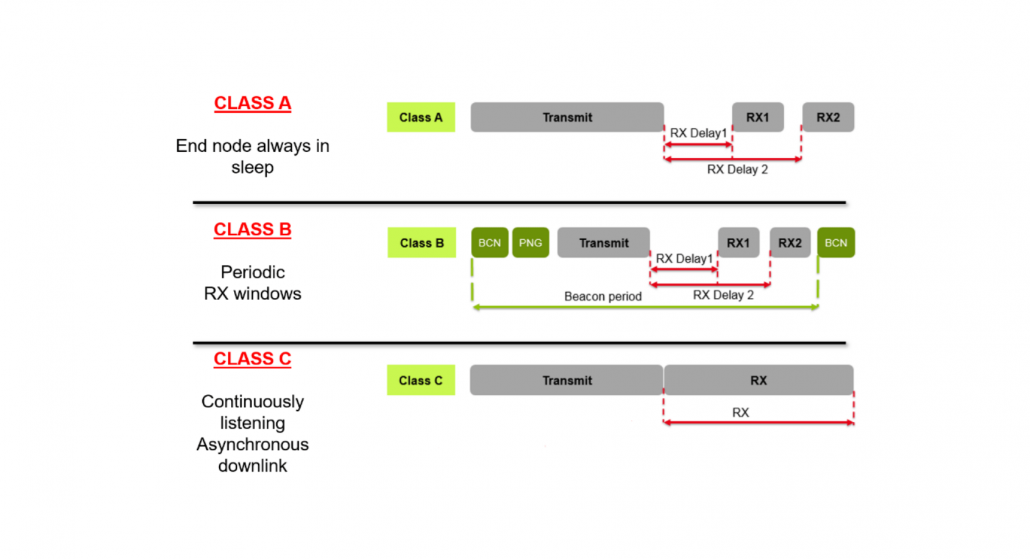
LoRa Technology
Chirp Spread Spectrum and Spread Factor
Chirp Spread Spectrum (CSS) is a modulation technique used by LoRa to enable long-range, low-power wireless communication with strong interference resistance. In CSS, data is transmitted using chirps—signals that increase or decrease in frequency over time. These chirps spread the data across a wide range of frequencies, making it resilient to interference and suitable for long-distance communication. Unlike narrowband signals, which are susceptible to noise and interference, CSS spreads the energy of the signal over a broader bandwidth, improving the reliability of the transmission even in challenging environments.
The Spread Factor (SF) is a key parameter in CSS and controls the duration and rate of each chirp, impacting both range and data rate. In LoRa, the spread factor can range from SF7 to SF12, where higher spread factors result in slower data rates but increase the transmission range. Mathematically, the data rate Rb in LoRa is given by the equation:
Spread Factor parameter affecting latency and error rate in LoRa communication. Huge SF value will produce a low error-rate communication with high latency while smaller SF value will produce a lower latency communication with huge error rate. The effect of Spread Factors and Chirp Spread Spectrum is visualized as below:
Each symbol to be transmitted will be modulated like below:

